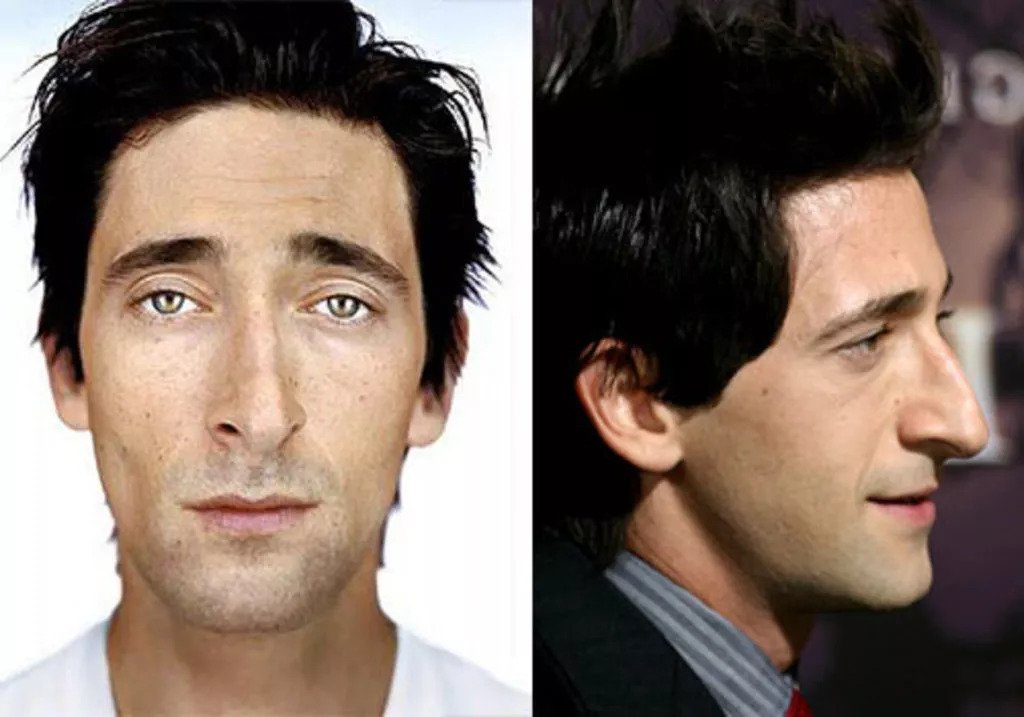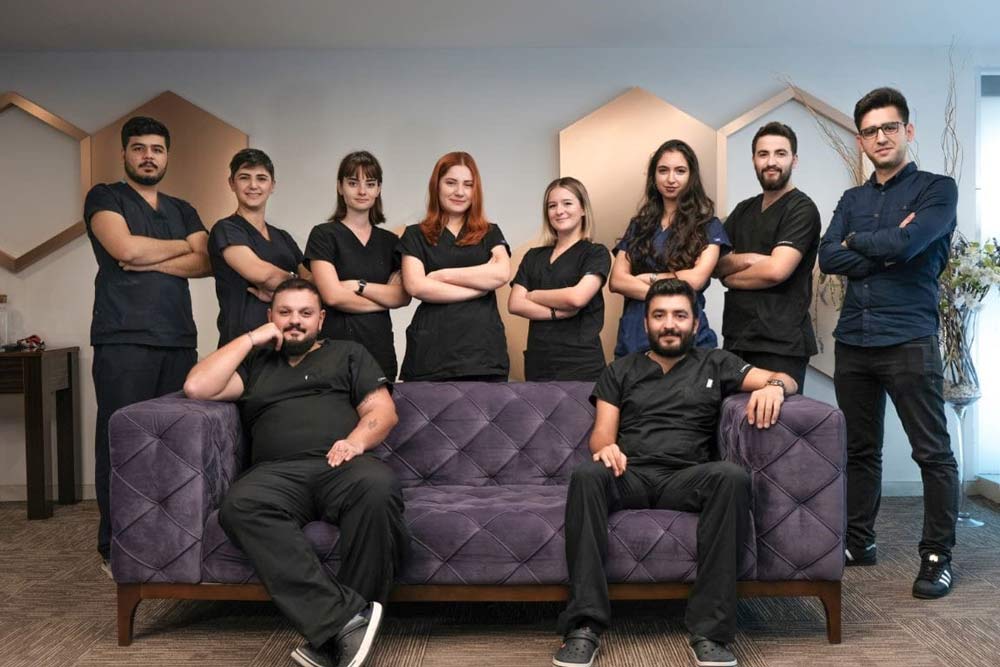Nose shapes, just like other parts of the body, are unique and special to the person. Although the shape, appearance and model of the nose are different, they have some common features depending on ethnicity. Ethnic nose shapes should be taken into consideration during rhinoplasty in order to have your dream nose. These can both influence the results and allow you to preserve your ethnic heritage.
What do the different ethnic nose shapes of different geographical regions look like? Does this difference affect the rhinoplasty surgery process?
Table of Contents
Ethnic Nose Shapes in 6 Different Regions
Since racial boundaries have largely disappeared today, it would be more accurate to classify nose shapes not in terms of race, but in terms of region. Ethnic nose shapes; it is classified according to Europe, Asia, Africa, Mediterranean, Latin and Indian regions. The details of these classifications are as follows:
European
When we look at the nose structures of the Europeans, it is noticeable that they have a narrow bridge. The bases of the noses of those in Northern Europe are wider and the ends are more protruding, while the noses of those in the northwestern regions are generally pointed. Compared to other ethnic groups, Europeans have longer and wider noses.
Source: https://www.quora.com/What-are-the-physical-differences-among-general-European-ethnicities
Asian
Asia is a very large region and therefore the shape of the nose may vary according to the regions. However, in general, it can be said that they have round and wide-tipped noses. Their bridges are not protruding, and the nostrils have an enlarged appearance. The most distinctive features of Asians are in this way.
East Asians are known for their thin noses. They have noses with a small surface area. South and East Asians have a pronounced and wide gap between the nose wings.

Source: https://wiki.d-addicts.com/Angelababy
African
Africans are perhaps the most broad-nosed ethnicity in the world. They have a characteristic nose structure with wide bases and low bridges. With its wide and round nose tip, enlarged holes and non-protruding bridge, it can be said that they have a structure that is noticeable everywhere.
Africa is a large continent, just like Asia, and the nose structures in different regions vary. West Africans have the widest nose, while North Africans stand out with their noses with the smallest width.

Source: https://www.freepik.com/free-photo/portrait-handsome-bearded-man_8511660.htm
Mediterranean
Mediterranean region; It can cover people from Southern Europe to Central Asia. There are people of many different races in it. Although the diversity of human races is high, there are some common features in the nose structure.
Wide bones, asymmetrical holes, nasal bumps are some of its distinctive features. There are types of noses that are characterized as slightly drooping and hunchbacked.
The nose structures of the Arabs in the Mediterranean region are associated with African ancestry. It is stated that there is a significant similarity between the Arabian noses and the African noses and that there are different reasons behind this.

Source: https://www.sedghplasticsurgery.com/wp-content/uploads/2019/05/stylish-916502_1280.jpg
Hispanic/Latino
There are millions of Latino and Hispanic people in America. This leads to a serious variety in question. In addition, immigration from abroad for many years has led to an increase in diversity. Therefore, it would be more accurate to classify the diversity of the nose structure over small ethnic groups.
Although the variety is very large, there are also some common features, such as thick skin and bulbous tip. In this area is a large bridge from the Spaniards, wide and straight nostrils from the Caribbean. From Central and South Americans, flat long nose bridges have been inherited.
Source: https://www.freepik.com/premium-photo/sweet-smiling-woman-happy-delighted-girl-portrait_16126135.htm
Indian
Common nose characteristics of those in the Indian region; The wider the structure, the round tip, the thicker the skin, the shape with a downward slope and the hump of the bridge. Although these characteristics are not one-to-one in everyone, common features can be listed in this way.

Read Also: Are the Results of Rhinoplasty Surgery Long-Lasting?
Does Race Determine the Shape of the Nose?
Race; it is the grouping of people living in a certain region through common qualities. The groups of people formed as a result of these groupings are expressed as races. It is a known fact that breeds have some specific features in common within themselves. Among them are also some physical properties. This suggests that the shape of the nose can be influenced by the race factor.
The structure of the nose does not depend only on genetic elements. Apart from this, the climate and conditions of the region are also important. Since human races live in the same region for a long time, their nose structures also adapt to the conditions of that region. For example; the noses of those living in the cold regions of the European continent are in a narrow bridge structure suitable for that climate.
From this point of view, it can be stated that the race factor is effective on the nose shapes, but it is not the only determinant. Apart from race, factors such as gender, temperature, humidity and genetics are also effective.
Other Nose Shapes Linked to Ethnic Origins
Ethnicities have an impact on the characteristics and shapes of the nose. Details on other nose shapes depending on ethnicity are given below:
Fleshy Nose
Approximately 24% of the noses worldwide fall into this class. There is a prominent and protruding nose appearance. It is typically large and large. It can be long or short, depending on the amount of bone and fat causing the bulge.

Source: https://i2.milimaj.com/i/milliyet/75/0x0/5ca7569a45d2a02864d94e26.jpg
Tip-Tilted Nose
It has a structure that has a small size and a protrusion with a recess on the bridge of the nose. It is also referred to as the celestial nose. Aesthetic surgeons state that this is the most preferred type of nose for those who have rhinoplasty. Approximately 13% of people have this nose type.

Rome Nose
It got its name from the nose structure that prevailed in ancient Roman sculptures. It has a prominent bridge and is usually slightly curved. Approximately 9% of the people in the world have this nose type.

Source: https://i2.milimaj.com/i/milliyet/75/0x0/5ca7569845d2a02864d94cbd.jpg
Hook nose
It has been characterized by pronounced bridge and curve. It has a structure resembling the curled beak of eagles and similar birds of prey. It is also named in different ways such as hawk nose, beak nose and eagle nose. The type of nose greatly affects the overall appearance and profile of the face. About 5% of people have this type of nose.

Source: https://imgrosetta.mynet.com.tr/file/40761/1024xauto.jpg
Nixon Nose
This name was given to classify those that resemble the nose type of Nixon, the 37th president of the United States. It is one of the rarest nose types and its incidence in the world is around 1%. Its characteristic features are that it has a straight bridge that curves with a wide end.
Source: https://www.marketplace.org/wp-content/uploads/2015/07/nixon.jpg
Bulbous Nose
It is a type of nose with a world incidence rate of 0.5% (five per thousand). The tip is round, the front part is bulbous.

Source: https://i2.milimaj.com/i/milliyet/75/0x0/5ca7569a45d2a02864d94dde.jpg
What Does Ethnic Rhinoplasty Surgery Provide?
When facial aesthetics are to be performed, it is of great importance to take into account the patient’s unique structure. Thus, the desired procedures can be performed without deteriorating the recognition of the patient, that is, without changing the general shape of the face. Otherwise, patients may become unrecognizable. It may even move away from the natural appearance. This is a situation that both patients and surgeons who perform the procedure will not want.
Rhinoplasty is among the rare procedures where its personalized approach is accepted. Without a non-personalized approach, the patient’s recognition and natural structure will suffer. It should not be forgotten that each nose structure for rhinoplasty is different and unique, so the procedure to be performed must be unique and different.
Despite all this, the noses of those of the same ethnicity or race have some common features. It is important that the surgeon performing the procedure does not have any compatibility problems with the rest of the face. For this, it is necessary to consider the characteristics of ethnicity along with aesthetic concerns.
Ethnic rhinoplasty; are nasal procedures aimed at the ethnicity of the patients. Here, when performing procedures for certain nasal features that patients want to change, measures and techniques for the preservation of ethnic characteristics are also taken into consideration. So, does the rhinoplasty depend on the shape of the nose?
Read Also: Which is the Best Country for Rhinoplasty?
Does Nose Surgery Depend on Your Nose Shape?
Ethnic rhinoplasty, as in other rhinoplasties, aims to achieve a result that is compatible with the facial features of the patient and that aesthetic concerns are eliminated. The only and most important difference here is the preservation of the unique ethnic characteristics of the patient. Therefore, the aesthetic surgeon performing the procedure should be familiar with the patient’s nose type and have experience in this regard.
As mentioned earlier, those of the same ethnicity have some common features in their nose structures. In every ethnicity, this situation is slightly different. Therefore, solutions to common complaints of patients from different ethnic backgrounds vary.
Although there are some special methods to be used in this area, the incision to be used is generally similar. Depending on the processing to be performed and the techniques to be used, open (external) and closed (endonasal) methods may be preferred. In the closed approach, the incisions are in the nostrils and therefore no scars are formed on the part visible from the outside. This feature of the method makes it more preferred by patients.
With the rise in the socioeconomic status of different ethnic minorities, a constantly increasing trend has emerged in the field of aesthetic surgery. According to a report released by the American Society of Plastic Surgeons in 2017, 30% of patients are of ethnicity such as Asian-American, African-American and Hispanic.
Rhinoplasty is not just an operation that changes the appearance. Different researches reveal that rhinoplasty patients’ self-esteem increases after surgery.
Read Also: Functional Rhinoplasty: Pros & Cons, Cost, Risks
Schedule a Consultation
If you want to have rhinoplasty and protect your ethnic heritage while doing so, you should first find an experienced surgeon in this field. The success of the procedure and meeting your expectations are closely related to the surgeon and clinic you prefer.
In the COSMETICIUM clinic, rhinoplasty surgery is performed with surgeons who have a great deal of experience in ethnic nose shapes. Thus, you are provided with a nose that will be compatible with your face, while your ethnic heritage is protected. You can contact us immediately for detailed information and free online consultation.

Fill In The Form Below To Get Answers To All Your Questions About Rhinoplasty From Our Doctors Within Hours. (FREE)

